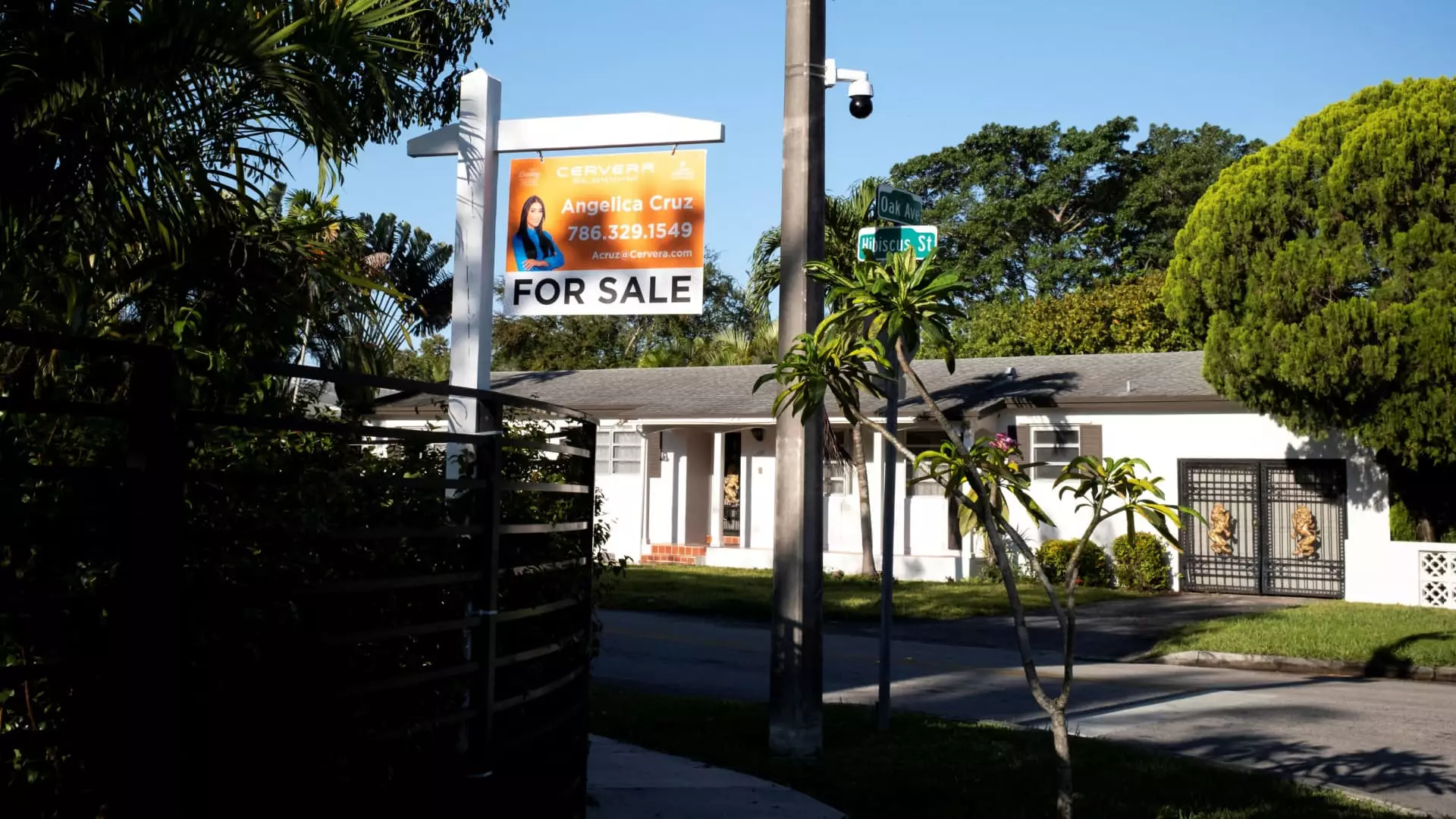As the spring housing market enters what should be an energized phase, prevailing conditions tell a different story, one filled with apprehension and downturn. The National Association of Realtors has unveiled statistics revealing a staggering 5.9% drop in previously owned home sales in March, plummeting to an annualized 4.02 million units. This downturn is not just another minor hiccup; it’s the most sluggish sales rate we’ve seen since 2009—a time when the nation was still grappling with the aftershocks of the housing crisis. With housing affordability at a crisis point, potential buyers are left feeling paralyzed, caught between the dream of homeownership and the grim reality of sky-high mortgage interest rates. The average 30-year fixed mortgage hovered above 7% for much of the early year, choking consumer confidence, and straining the budgets of hopeful buyers.
Many have mistaken market fluctuations as merely cyclical, but this time, high rates coupled with economic uncertainty present a scenario that feels markedly different. It’s as if we are caught in a vice, squeezing out both the seller’s motivation and the buyer’s ability to enter the marketplace. Our economic mobility is being threatened, with home buying turning from an aspiration into an elusive mirage. The faltering sales not only affect those in the market but resonate throughout the broader economy, tightening the very threads that weave our communities together.
Regional Disparities: An Uneven Landscape
Analyzing regional discrepancies within the housing market reveals a landscape of both despair and hope. While nationwide, sales figures languish, certain areas like the Rocky Mountain states report some resilience, marking the only year-over-year sales growth in the West. Yet even this portrayal becomes murky when one scrutinizes the larger picture: a 9% month-to-month decline across the West, signifying volatility even in regions previously deemed sound in terms of real estate. This raises the question: can a market be considered healthy if it appears to teeter on a precipice, vulnerable to the slightest economic tremors?
The dynamics of supply and demand in this sector often feel distorted. With 1.33 million homes available for sale, the numbers sound promising at first glance—yet a deeper look reveals that we are merely dealing with an illusion of abundance. A four-month supply of homes isn’t enough to satiate a market that yearns for a balanced equation between buyers and sellers, a tug-of-war intensified by cascading cancellations of contracts and heightened anxiety regarding stock market volatility.
Affordability Crisis: A Barrier to Entry
Prices are not dropping, yet they feel increasingly unattainable. The median home price for March stands at $403,700, which, while an all-time high for the month, only marks a mere 2.7% increase from the previous year. This stagnancy in growth belies the rising barriers to entry that first-time buyers face. They accounted for a disappointing 32% of sales, substantially below the historical average of 40%. It’s troubling to witness an entire generation being priced out of the market, forced to endure the prolonged agony of renting while wealth continues to consolidate in the hands of a few. The decline in all-cash sales reflects a growing trend where even once-competitive investors begin to retreat, wary of engaging in a market that no longer favors them.
The systemic challenges faced by potential homeowners are a clarion call for action. If investments in real estate continue to soar without corresponding wage growth, social equity is at risk. People should not have to wrestle with the compounding pressures of stagnant wages and rising interest rates, all while watching wealth inequality deepen. The essence of the American dream—homeownership—is slipping further from reach.
Future Trajectories: What Lies Ahead
Looking forward in this precarious housing landscape, one must grapple with the reality that the worst may yet be on our doorstep. The pessimistic forecasts of economists like Robert Frick serve as a stark reminder that the housing market is a barometer for broader economic health. With rising cancellation rates and lurking uncertainties, faith in recovery becomes increasingly fragile. In the face of soaring mortgage rates, falling buyer enthusiasm, and uneven regional performances, one can’t help but wonder: has a robust housing market gone from being a spring rite to yet another season racked with uncertainty and trepidation?
Each indicator paints an unsettling picture—one where hope is dimmed by soaring prices and stifling financing costs, where the dream of homeownership becomes a distant aspiration for many, and where economic mobility risks stalling altogether. The stakes are incredibly high, and the whispers of a looming crisis echo far louder than any optimistic forecast can drown out.

